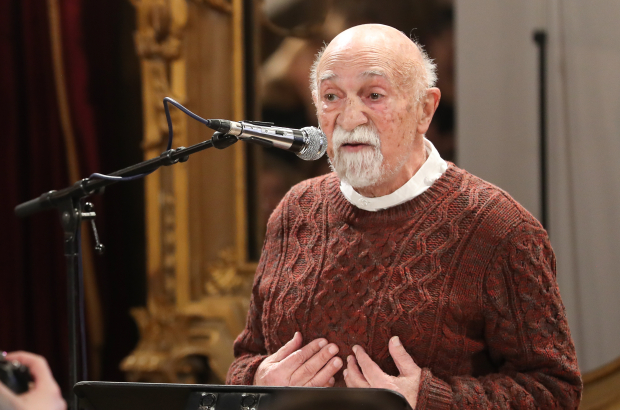- Daily & Weekly newsletters
- Buy & download The Bulletin
- Comment on our articles
Brussels to honour three resistance fighters who saved Jews during war
The Brussels parliament has unanimously approved a resolution to erect a monument in honour of three Brussels resistance heroes who helped save the lives of over a hundred Jews during the second world war.
On 23 April 1943, Youra Livchitz, Jean Franklemon and Robert Maistriau successfully sabotaged a deportation train. The so-called 'Twentieth Convoy' was on its way from the Dossin barracks in Mechelen towards the Auschwitz extermination camp, with 1,631 Jews - including 262 children - on board.
The three young heroes of the resistance, armed with only a pistol and a red lantern, managed to bring the train to a stop near Boortmeerbeek and let 231 deportees flee. Some of them were shot or rearrested by the Nazis, but 131 people managed to escape. Among them was Simon Gronowski (pictured), who was 11 years old at the time and who still gives lectures today to tell his story about the escape.
Youra Livchitz was wounded during the daring act and hid in Brussels, where he was later betrayed by someone from his network. He was executed by the Germans. Robert Maistriau and Jean Franklemon were arrested but survived the war.
Apart from a statue at Boortmeerbeek station and two memorial paving stones in Uccle, there is little to be found about this act of resistance in the public space, said member of parliament Bianca Debaets, the initiator of the motion for a resolution. This is why the resolution asks the Brussels government to erect a memorial to the resistance fighters and the Brussels municipalities to name streets and squares after them.
"These three young people put their lives at risk to fight against Nazi barbarism,” Debaets said. “They and all the other resistance fighters are true role models which our youth can, even today, be inspired by."
The Brussels parliament also wants to make the monument an instructive place for all Brussels residents and other visitors by adding a didactic, pedagogical and educational angle. The objective is to inform as many people, especially young students, as possible of this historical event and the values it represents.
















